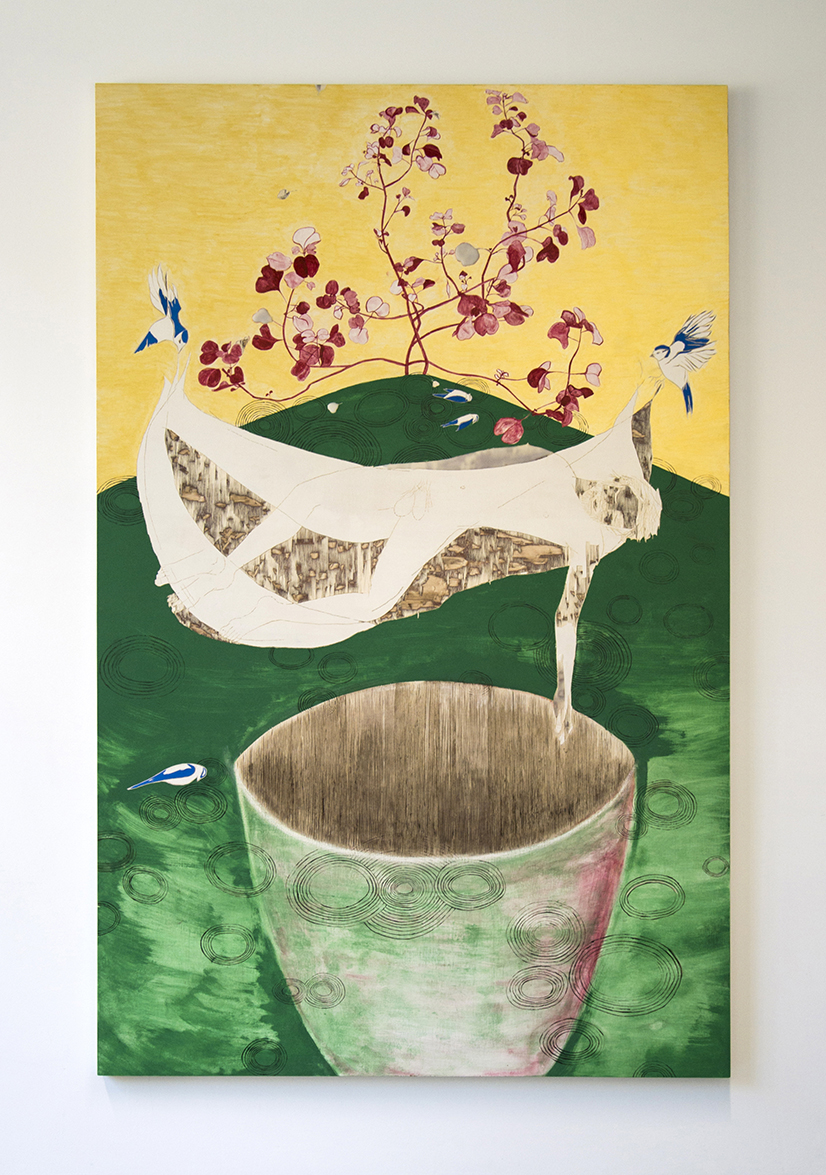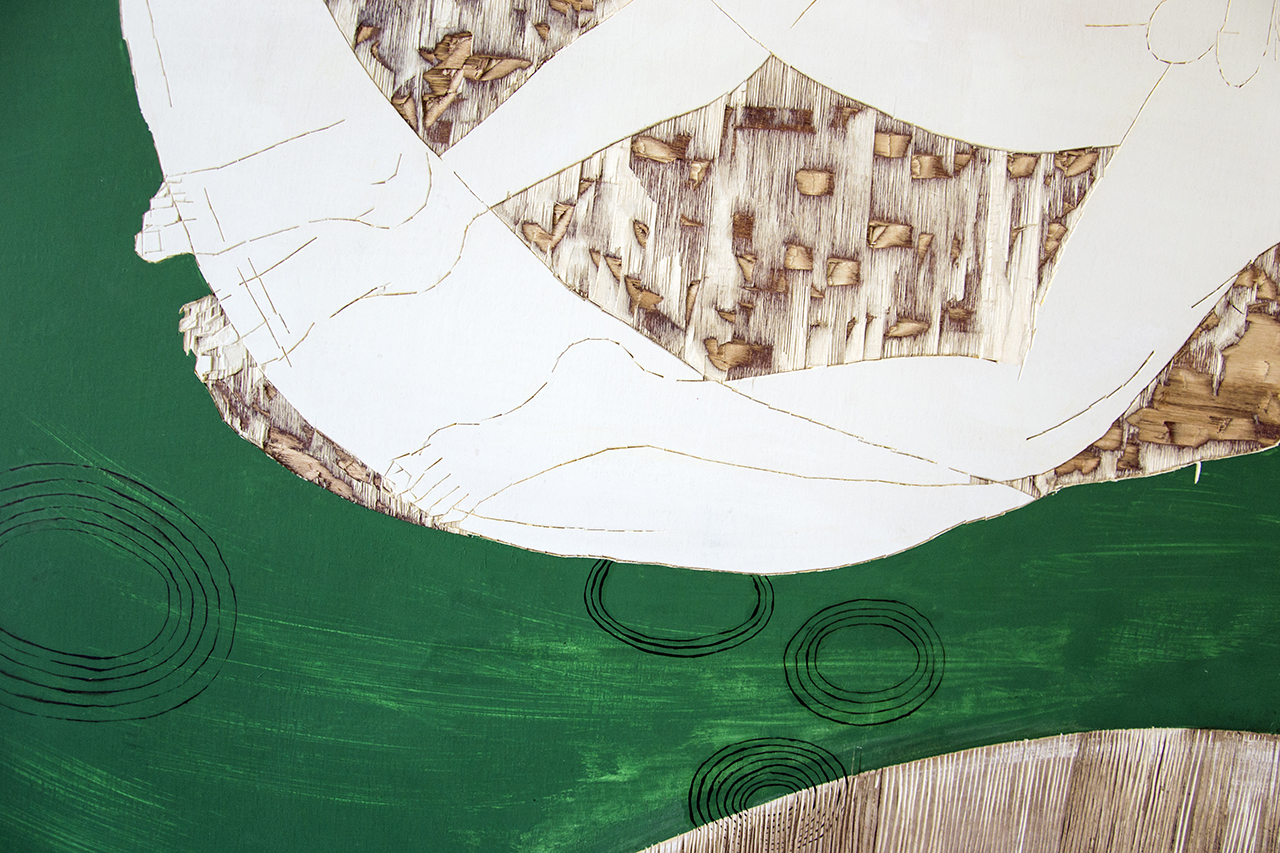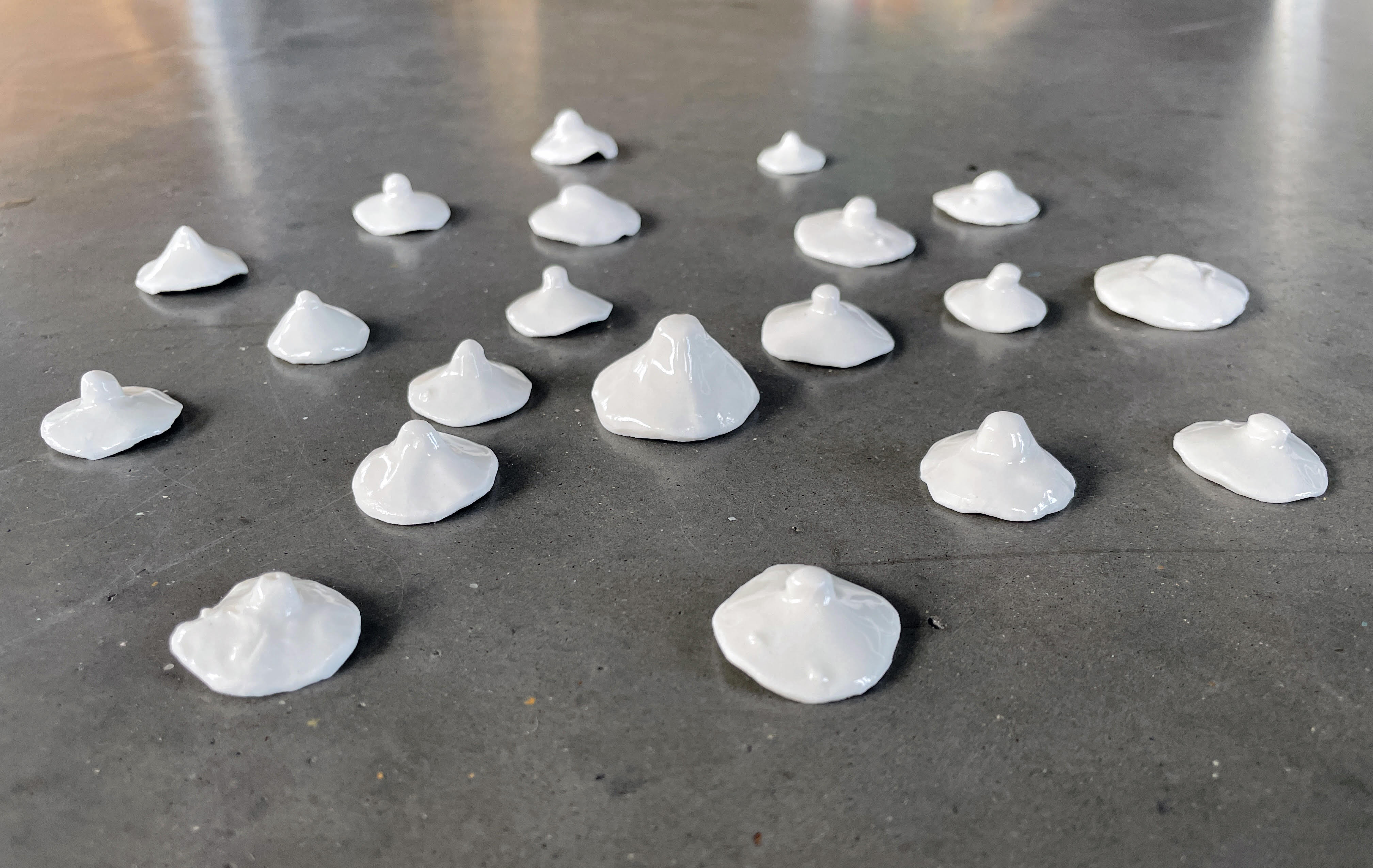26 April—02 July 2021
Online

Blue Tits, 2020
Mineral pigment, beeswax, oil paint, watercolor on carved wood; 180 x 115 cm
Price on request
As second correspondent for Love Letters, Astrid Korporaal and Basia Sliwinska invite Gaia Fugazza. Support the All-Poland Women’s strike by purchasing the editions, and the artists through their works (by emailing info@almanacprojects.com).
Blue Tits
Paul B. Preciado suggests that the Covid-19 pandemic generated a shamanic ritual for stopping the world. The rhythm of everyday life, as determined by late-capitalist and neoliberal necropolitics, was broken. For many people this collective experience has activated a process of transformation towards living with others. Negligent to the damage we as humans wreak on the body of the earth, we have realised that, perhaps, we have not learnt to live with other species. The naturalised divisions between living and non-living, valid and invalid bodies are just that - universalised pillars to support the patriarchal capitalist trophic chain. The current pandemic has jarred us into consciousness of nature’s power to interrupt our expectations of progress, our plans for the future and our movement across space.
In April 2020, parallel to the Covid-19 outbreak, a mysterious illness affecting the blue tit population took hold, leaving thousands of dead birds in Germany. How many of us took time to consider this event, or mourn this loss? In times of crisis, our trained response in what Naomi Klein calls ‘disaster capitalism’ has been a leap to action, towards increased productivity and intervention. But the diminished possibility of travelling and the extended period of social isolation, have also made other kinds of responses perceptible. In Fugazza’s painting, we see an unconscious man being carried in a cloth held up by blue tits towards a hole or a vase. The work features motifs inspired by medieval paintings; the flatness of the figures and the golden sky, which traditionally signifies the immobility of time. In medieval tradition, time was sacred and something that humans could not possess. This was a fundamental reason for the prohibition of profit from financial loans and speculation.

In the background of the painting, a delicate but majestic blood leaf plant dominates a bare hill. Floating amongst the landscape are concentric circle compositions, reminiscent of auras of invisible beings or viral formations. The image of an unconscious, sleeping person conjures up connotations with passivity and vulnerability, which contemporary late capitalist and neoliberal society prioritising productivity and efficiency often negatively associates with powerlessness and femininity. In this painting and others in the series, Fugazza describes the naked male figures as being ‘gently put into place’ by plants and animals. Rather than restrictions or restraints, this imagery helps us associate inactivity with a return to spaces of nurturing and care. Confined to our immediate surroundings, we may find shelter there, and become attuned to other rhythms of (de)growth. These are not spaces or rhythms that are only available to womxn, or that are essentially tied to ‘female’ bodies. These may be spaces of encounters with others, living and non-living, based on the possibility of sharing unconditionally against the war on life incited by modernity. In Daoist traditions, we might associate this with the Yin space of the womb, which flows through all of us, and which we all care for.

Prime conoscenze (First acquaintances), 2021
Limited edition (20 available). Glazed porcelain, 2.5-4 cm
All proceeds donated to Ogólnopolski Strajk Kobiet
(the All-Poland Women’s Strike)
Purchase by emailing info@almanacprojects.com
(30 pounds + postage and shipping)
Prime conoscenze
Another intimate space that returns in Fugazza’s works is the space of the mouth. In previous works, she explored the connections between women’s uses of plant medicine based on empirical knowledge and the history of European witch persecutions. Many of the accusations of witchcraft, related to processes of land but also female body enclosure and control, were in fact accusations of crimes against reproduction, through the ingestion of plant-based contraceptives. Some of these plants, such as Mimosa Pudica, also functioned as aphrodisiacs. By making sculptures that can be held in the mouth, Fugazza reconnects this space of desire with indigenous knowledges and memories of embodied agency. In modern times, Sigmund Freud identified the mouth as an infant’s primary erogenous zone, the first element in a timeline of psychosexual development which moves towards the genital stage. According to Freud, breastfeeding children for too long could result in ‘oral fixation’ and psychological dependency. With Fugazza’s individually moulded ceramic sculptures of nipples, we are invited to hold the artworks in our mouths as a way of knowing and exploring the relationship between the two. At the same time, we are brought back to our ‘first acquaintances’ with our bodies as relational and interconnected.

Gaia Fugazza’s practice includes paintings and performance, exploring the troubled relationship of humans and the natural environment, plant knowledge, reproduction and transcendental practices. Recent solo and duo exhibitions of Fugazza’s work have been held at Häusler Contemporary; Zurich, Gallleriapiù; Bologna and Zabludowicz Collection, London. Recent performances include Transcendence, Royal Academy of Arts, London; Super Nature in two Parts, Lisson Gallery, London; Baltic Triennial 13, South London Gallery, London; Star Messenger, LUX, London; Water from the Waist Down, Kunsthall Oslo. Her work has been featured in several Biennales and institutional shows such as the 13 Baltic Triennal, Glasstress, Venice, Mediterranea, Milan, The London Open, Whitechapel Gallery; Hrm 199 Ltd, Tinguely Museum, Basel. Fugazza regularly collaborates with other artists and curators to create alternative ways to present works, such as the party My Night of Unlimited Favour at the Royal Academy of Arts and Grandine, the exhibition program that she runs in from her studio.